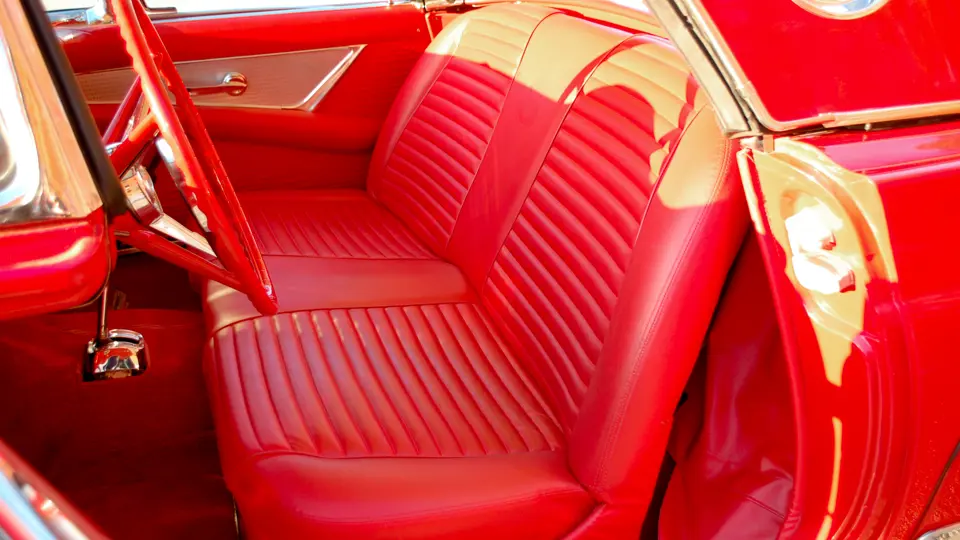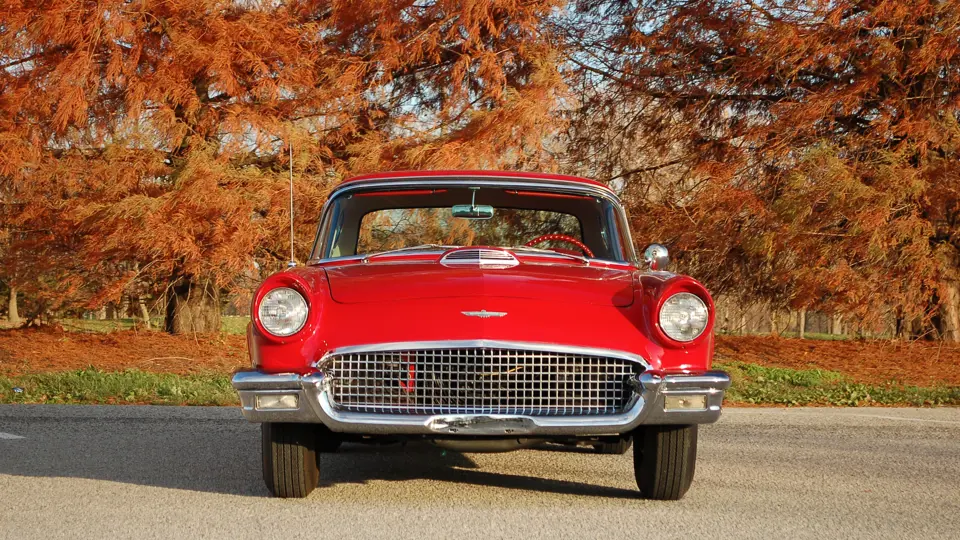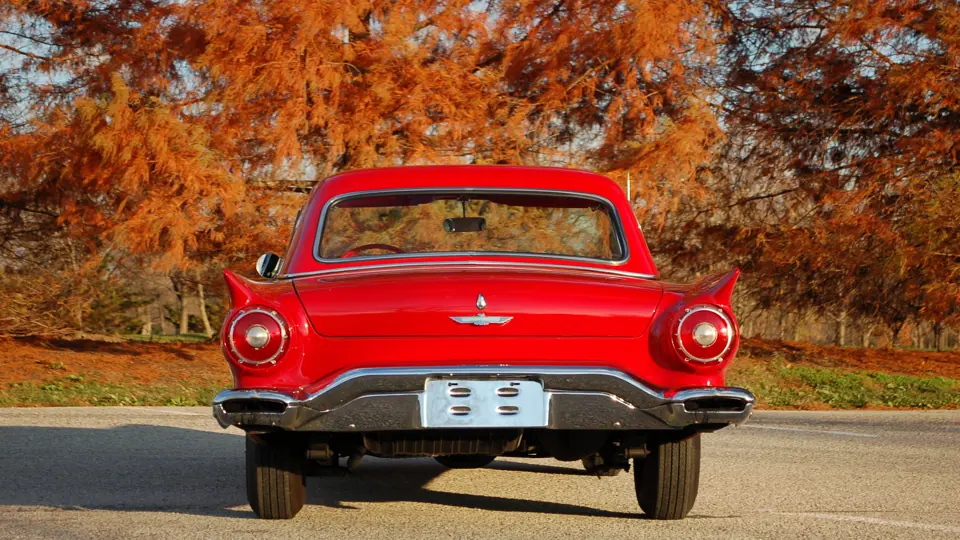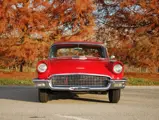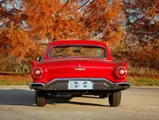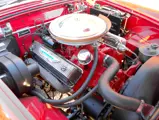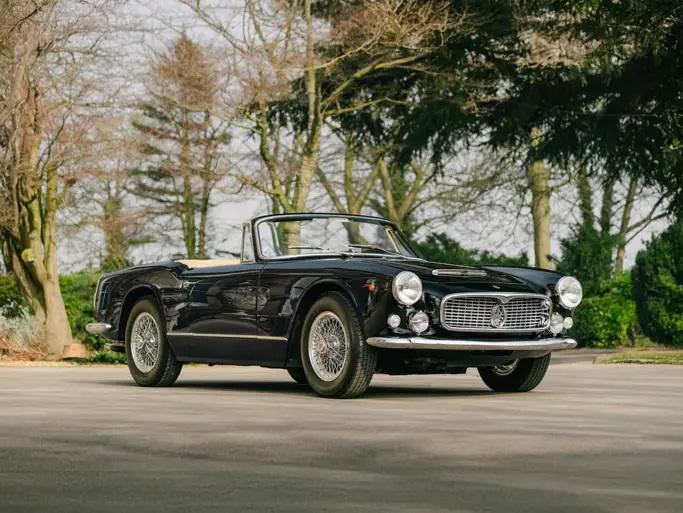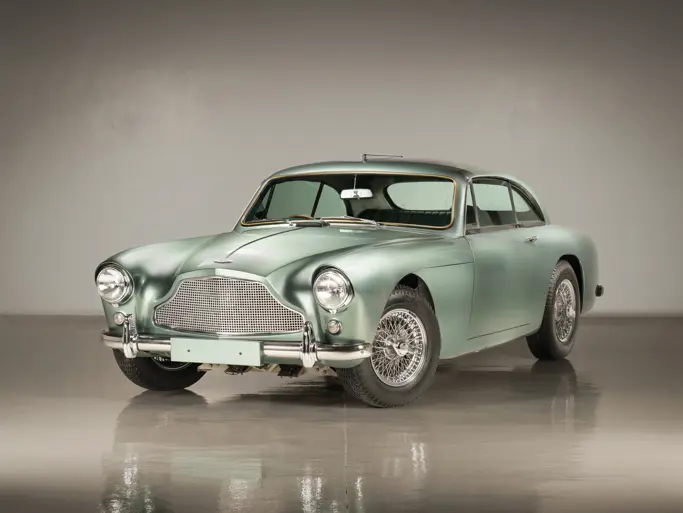245 hp, 312 cu. in. V-8 engine, Holley four-barrel carburetor, Ford-O-Matic three-speed automatic transmission, coil spring independent front suspension, semi-elliptic rear springs with live axle, and four-wheel hydraulic drum brakes. Wheelbase: 102"
• The last (and some say best) of the first generation Thunderbirds
• Fully documented and photographed frame-up restoration
• Flame red paint, with red vinyl interior and porthole hardtop
• Kelsey-Hayes chrome wire wheels, engine dress up kit
Based on a February 1954 show car, Ford’s two-seater Thunderbird was introduced on October 22 that fall and crowned what would be a very successful year for the marque. Ford sold 1,451,157 cars in the model year, its second best year in its history.
Dubbed a “personal car” rather than a sports car, the Thunderbird was a sophisticated reply to Chevrolet’s Corvette, with its six-cylinder engine and roadster top. The T-Bird was low-slung and of all-metal construction, with a powerful 292-cubic inch V-8 and a removable hardtop. A total of 16,155 were sold that first year, as opposed to just 700 Corvettes. The 1956 T-Bird was relatively unchanged, though the top gained “porthole” windows, the spare became a “Continental” kit to gain trunk space, and a 312-cubic inch Thunderbird Special V-8 was optional.
The Thunderbird was redesigned for 1957 to produce what most observers believe is the most beautiful two-seater version. The front bumper was smoothed out and dropped in the center, the trunk extended to accommodate the spare wheel and canted fins flowed back to big round taillights. Fourteen-inch wheels lowered the car, and several high-performance engines were offered, up to a 285-hp racing special. Sales rose to 21,380, but it would be the last two-seater until 2003.
Benefiting from a fully-documented and photographed body-off restoration, the Thunderbird offered here sports the 245-horsepower, 312-cubic inch V-8 engine with a dress-up kit, a Ford-O-Matic transmission and power steering. Finished in flame red, it is very nicely complemented by a red vinyl interior, a matching porthole hardtop, chrome wire wheels and period-style wide whitewall tires. With a well-fitted interior, excellent panel fit and lovely paint and chrome, it is a handsome example from the final year of two-seater “Little Bird” production.
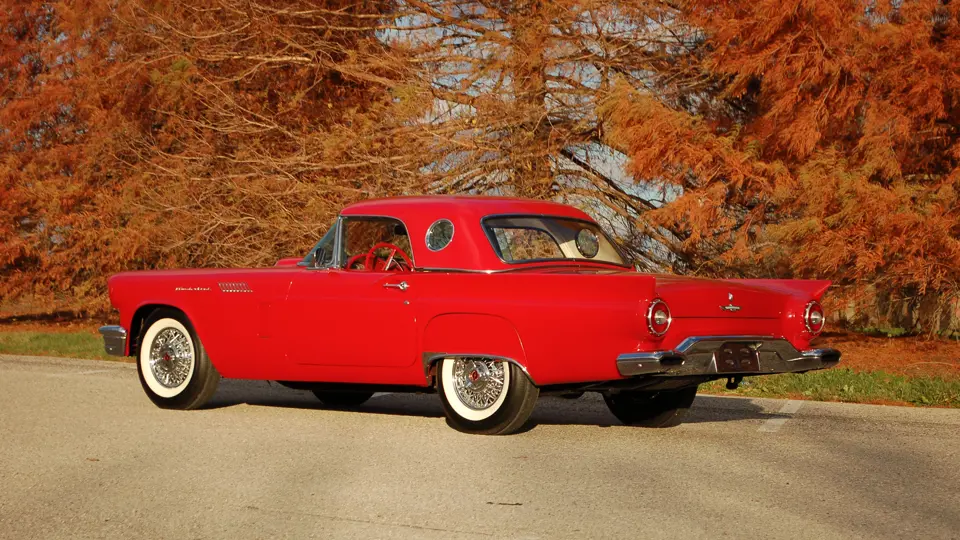
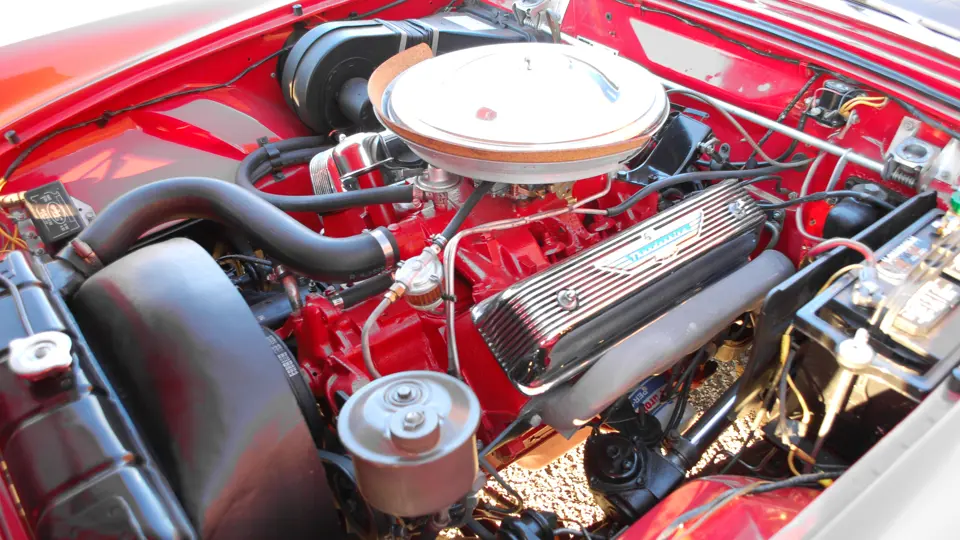


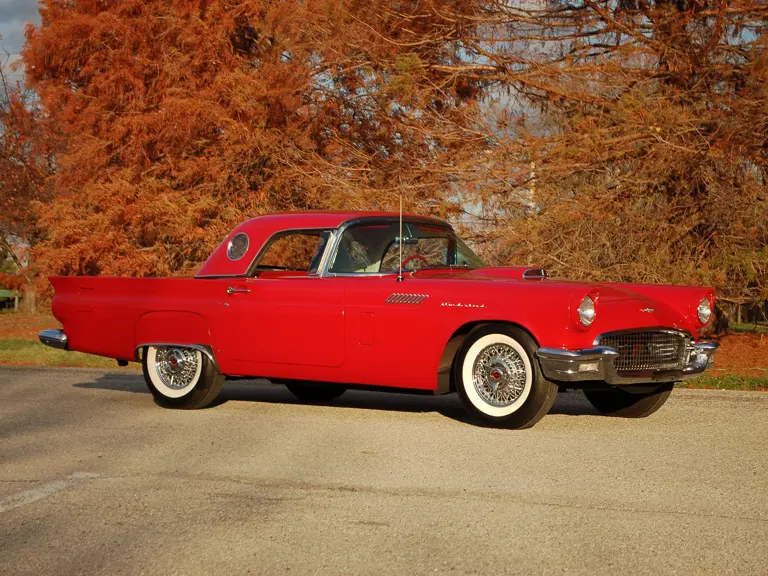
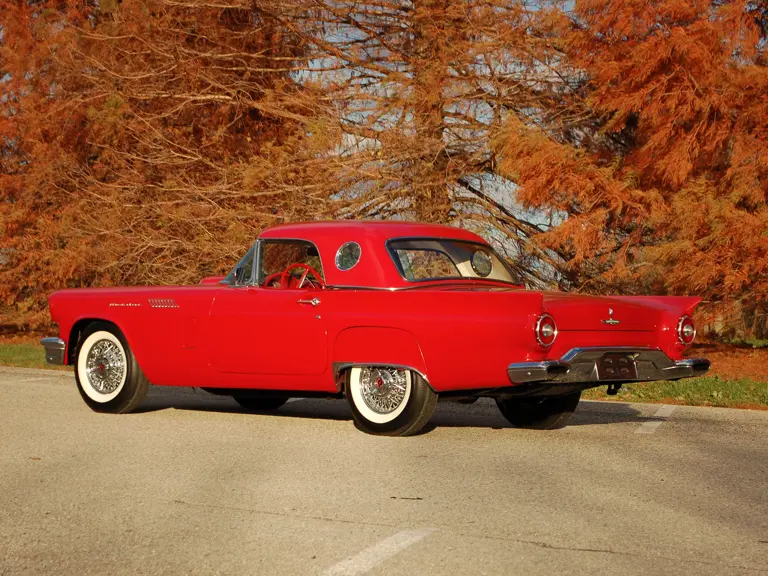
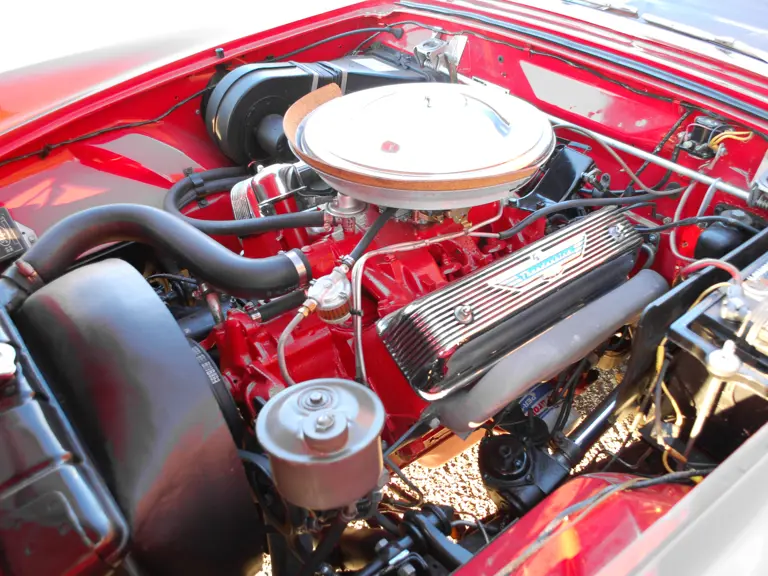
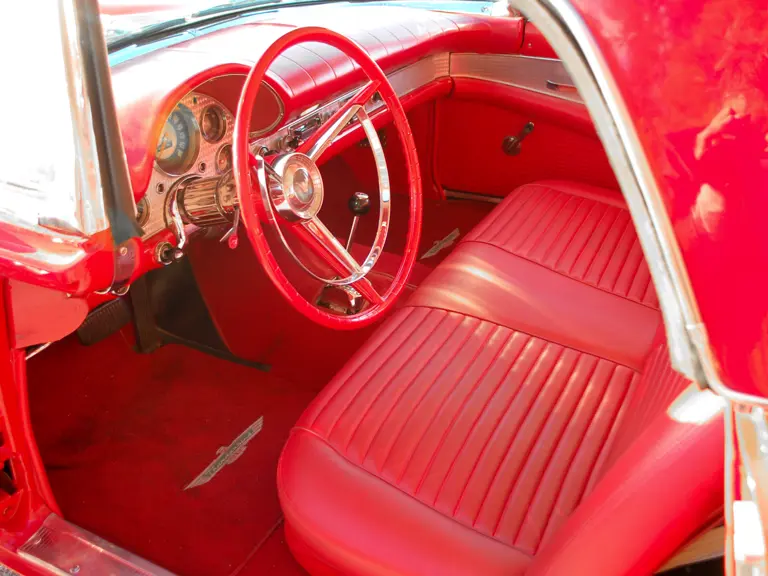
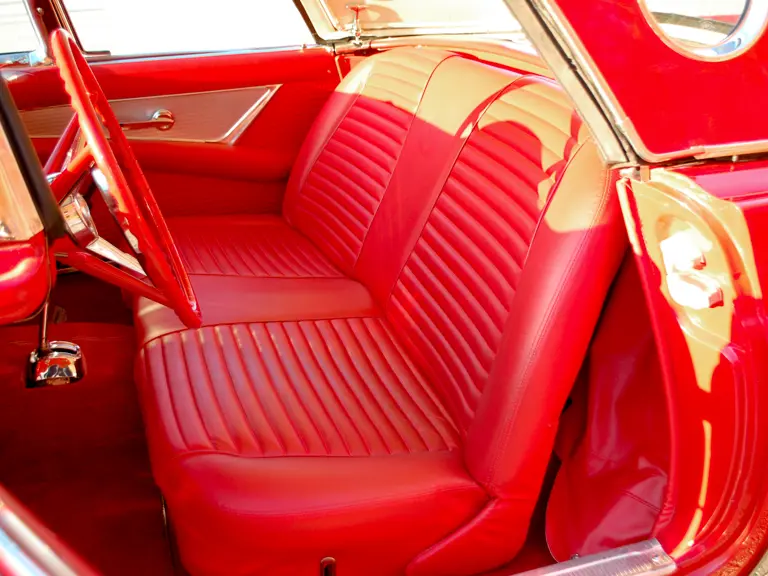
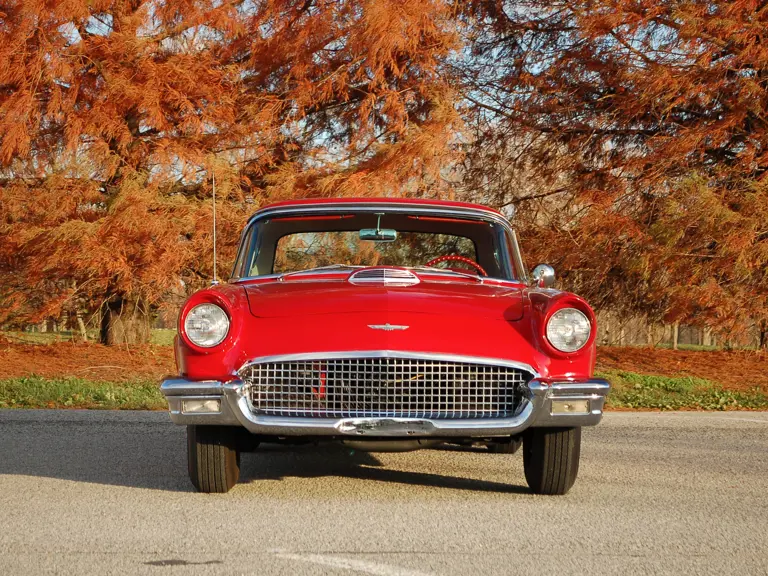
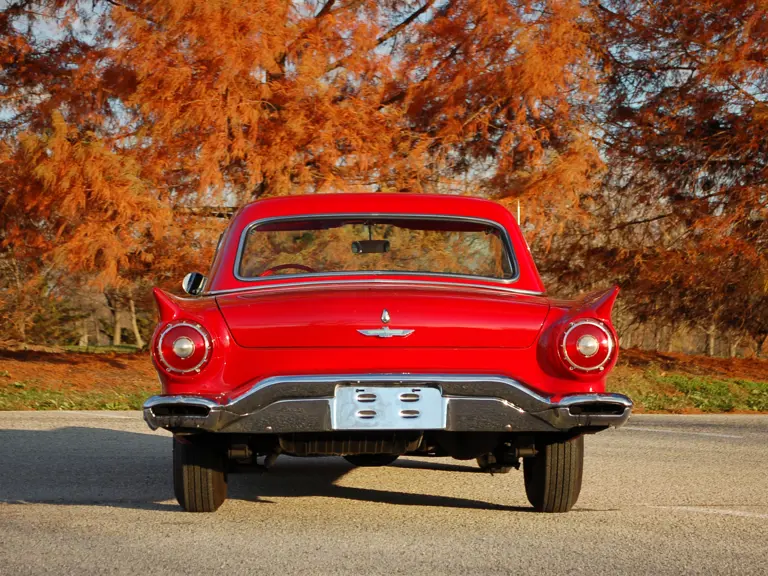
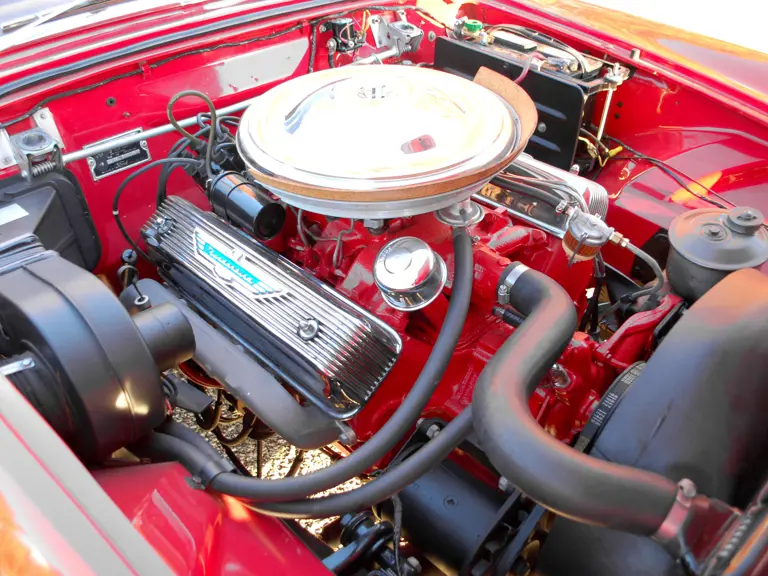

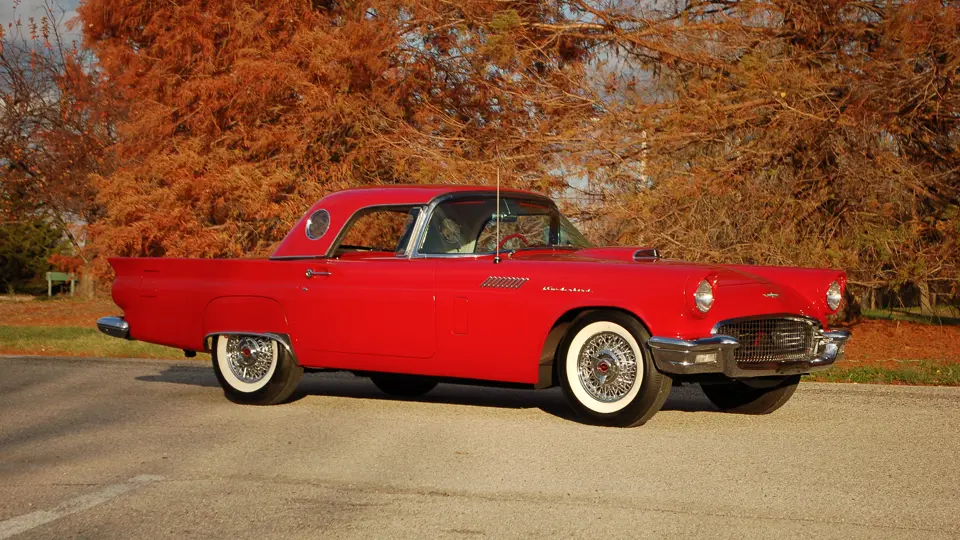
 | Phoenix, Arizona
| Phoenix, Arizona
